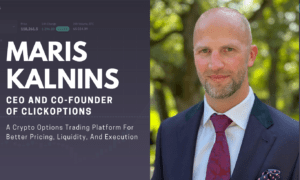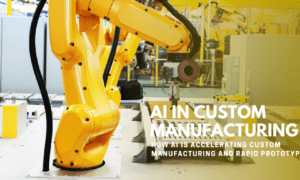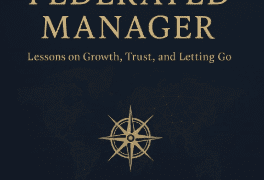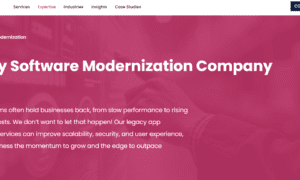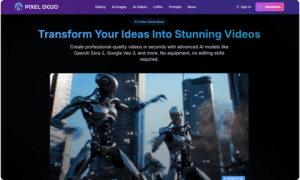.Positioning shapes how your product is understood before users try it
.Strong positioning speaks to a specific audience and problem, not just features
.Technical founders often underestimate the value of narrative in early traction
.Products evolve, but a clear positioning strategy guides long-term growth
Every year, hundreds of startups introduce tools that are faster, smarter, and more powerful than those already available. Most of them still flop. Not because the tech isn’t good — it usually is. However, someone else arrived first with a clearer message, sharper angle, or just better timing. In the tech industry, the most innovative product doesn’t always win. The one that’s positioned best does.
You’re building a great product. So why aren’t people biting?
You’ve spent months refining your backend, optimizing your UX, and addressing user feedback. Maybe you’ve even shipped faster than your competitors. But still, traction’s flat. Every customer win feels like a grind. People nod in demos but vanish after the call.
It’s frustrating, especially when you know your product solves a real problem. You’ve done the work. But here’s the problem: the market doesn’t reward hard work. It rewards clarity. If users don’t instantly understand where your tool fits, they’ll default to what’s familiar — even if it’s worse.
Positioning isn’t a branding exercise or a late-stage fix. It’s your product’s entry point into the market. And right now, that entry point might be muddy if your pitch sounds like everyone else’s — “AI-powered,” “seamless,” “scalable” — then you’re competing in a sea of sameness. What you need isn’t another feature. It’s a sharper hook.
The companies getting traction aren’t always building better tools
Look around the tech scene and you’ll see it: companies raising rounds, landing logos, and moving fast with products that, frankly, aren’t that remarkable. Founders love to obsess over features, but most customers don’t. They recall the first product that addressed their specific situation.
That’s where narrative starts to beat code. The companies pulling ahead are often the ones that lock into a market’s language early. They carve out space not with engineering, but with messaging. They sound like they built the tool specifically for a particular kind of user, and they openly acknowledge it everywhere.
Working with a technology marketing company like Opollo isn’t about polishing pitch decks or writing fluff. It’s about shaping how people perceive you before they interact with the product. These companies help frame what the product is for, not just what it does. And in a crowded market, that distinction is everything.
It’s easy to dismiss early traction as hype. But if someone else is getting it and you’re not, it’s worth asking: are they better? Or just clearer?
Positioning makes customers feel like you built the tool for them
When your positioning is sharp, people don’t just understand what your product does — they assume it was built specifically for them. That’s the difference between a visitor who bounces after skimming your homepage and one who signs up on the spot.
The reality is that most products aren’t unique. But perception is. The tools that gain early momentum usually win because they address a specific type of user, with a corresponding problem, in a particular context. They don’t chase broad use cases or try to impress with feature lists. They lead with a problem their audience already recognises — and then slot their product in as the obvious solution.
Positioning does this by choosing a lens. Is this tool for overwhelmed ops leads in SaaS? For compliance managers in fintech? For remote support teams in healthcare? Each of those angles might use the same backend, but the front-facing story changes everything.
The stronger that story, the less you have to “sell.” Customers connect because it sounds like you’re in their head. They aren’t comparing buttons or dashboards — they’re thinking, finally, something made for us.
Why technical founders tend to undervalue positioning
If you’ve spent your career shipping code or architecting systems, it makes sense that you’d believe in the product above all. In tech, we’re trained to think that good engineering wins. And sure, on some level, it does. But only if people get far enough to experience it.
Many technical founders fall into the same trap: they build first, then try to “market” the product later. But positioning isn’t an add-on. It’s the layer that tells people why your product matters before they ever click through.
The tricky part is this: the things that make your tool powerful are rarely the things users care about upfront. Internal metrics, elegant solutions, clever integrations — they all fade if the market doesn’t understand the core value fast.
There’s also a pride issue. Founders want the product to “speak for itself.” The idea of narrowing your message or targeting a specific niche can feel like a compromise. But in reality, it’s a strategy. Getting hyper-specific early on doesn’t limit your market. It opens a door and gives your product room to breathe.
Positioning isn’t fluff. It’s a filter — one that shapes everything from product decisions to sales conversations. Ignore it, and even great tools struggle to find a foothold.
Products change. Positioning sticks
It’s easy to think positioning is a one-time job, something you figure out at launch and never revisit. But strong positioning isn’t a tagline — it’s a strategy. And the companies that win in the long term are the ones that continually refine how they frame their product, even as the product itself evolves.
In tech, pivots are standard. Features shift, markets move, and what felt like your edge six months ago might now be table stakes. What remains constant is the need for a clear and confident message. When your positioning is solid, it acts like a compass. It helps you decide what to build next, which customers to prioritise, and how to stand out as your space gets noisier.
Consider this: a product that leads today might lag behind tomorrow. But if the way you talk about it still hits a nerve — if it still solves a visible, specific problem — people will stick around. They trust you to keep evolving with them.
That trust doesn’t come from a slick interface or feature parity. It comes from showing users that you get them. Positioning does that better than any roadmap ever could.








